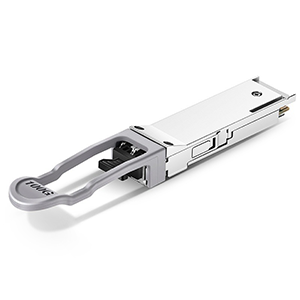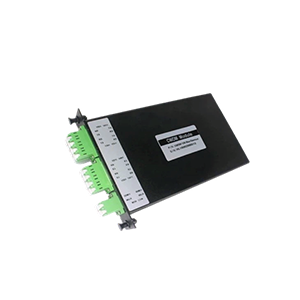Data center networks are increasingly demanding flexible scalability. This article will explore the concepts of Cisco FEX switches. We will first define the basic working principle of FEX switches and explain their relationship with traditional switches. Next, we will explain the advantages of FEX switches in terms of functionality and performance, and analyze their role in network topology.
We will introduce the hardware composition and core technology of FEX switches, and explore the impact of hardware design on their performance. In addition, we will explain the software features of FEX switches and their implementation mechanisms, and explain how they work with the master switch. Finally, we will list typical data center topologies suitable for deploying FEX switches and analyze their advantages in improving scalability.
What is a Cisco FEX switch
Let me introduce you to Cisco’s FEX (Fabric Extender) switches.
Basic working principle of FEX switch:
(1) Definition:
- FEX switch is a special layer 2 switch that works with a core switch (Fabric Interconnect).
- Through simplified hardware design, FEX switch can provide more interface ports for the network at a lower cost.
(2) Working principle:
- FEX switch transmits all its data traffic to the core switch for processing.
- The core switch is responsible for the configuration management, security policy execution and other control functions of the FEX switch.
- FEX switch focuses on providing more physical interface ports, simplifying the hardware design.
(3) Advantages:
- Reduces the deployment cost of access layer switches.
- Centralized management simplifies the configuration and operation of the entire network.
- Flexible port density expansion capabilities can meet different application requirements.
Relationship between FEX switches and traditional switches:
(1) Control layer separation:
- Traditional switches need to complete all functions such as control plane and data plane by themselves.
- FEX switches only need to complete data forwarding, and the control plane is managed uniformly by the core switch.
(2) Functional simplification:
- Traditional switches need to implement richer management and protocol functions.
- The hardware and software design of FEX switches are simpler and less expensive.
(3) Scalability:
- The port scalability of traditional switches is limited by their own hardware capabilities.
- FEX switches can flexibly expand more physical interface ports.
(4) Centralized management:
- Traditional switches need to be configured and managed separately.
- The management of FEX switches is centralized on the core switches, simplifying network operation and maintenance.
In short, FEX switches make up for the shortcomings of traditional switches in scalability and centralized management through control layer separation and function simplification. It is a new access switch solution proposed by Cisco.
Technical features of FEX switches
Let me introduce you to the main technical features of FEX (Fabric Extender) switches in detail.
FEX switch advantages in terms of function and performance:
(1) Simplified hardware design
- The hardware design of FEX switch is simpler and lighter.
- No complex control plane functions, focusing on providing more interface ports.
(2) Centralized management
- All configuration and management of FEX switch are completed by the core switch (Fabric Interconnect).
- No need to perform complex configuration on FEX separately, which greatly reduces the complexity of network management.
(3) Excellent scalability
- FEX switch can flexibly expand more physical interfaces at a lower cost.
- By increasing the number of FEX devices, the access port density of the network can be quickly increased.
(4) Performance guarantee
- Although the control function of FEX itself is limited, its data forwarding performance is completely dependent on the core switch.
- Through the powerful processing power provided by the core switch, FEX can ensure high-performance forwarding of the network.
The role of FEX switch in network topology:
(1) Access layer expansion
- FEX switches are mainly deployed in the access layer of the network to expand more interface ports.
- By adding FEX devices, the port density of the network can be quickly increased to meet the growing access needs.
(2) Hierarchical network architecture
- As an access layer device, FEX switches form a hierarchical network topology with core switches (Fabric Interconnect).
- The core switch is responsible for control and management functions, while FEX focuses on providing more physical interfaces.
(3) Simplified network deployment
- The centralized management feature of FEX switches greatly simplifies the deployment and configuration of the access layer.
- Network administrators only need to configure unified policies on the core switch.
(4) Flexible network expansion
- By increasing the number of FEX devices, the port capacity of the network can be quickly expanded.
- This expansion method is more flexible and efficient, and there is no need to make large-scale adjustments to the entire network topology.
In general, FEX switches play an important role in the network access layer and can provide more flexible and efficient expansion capabilities for the hierarchical network architecture.
Hardware architecture of FEX switch
Let me introduce you to the hardware architecture of FEX (Fabric Extender) switch and its impact on performance.
Hardware composition and core technology of FEX switch:
(1) Hardware structure:
- The hardware design of FEX switch is relatively simple, mainly including the following parts:
- Data forwarding engine: responsible for data packet forwarding processing
- Interface module: provides physical interface port
- Power module: provides power for the entire device
- Management control module: communicates with the core switch
(2) Core technology:
- FEX switch relies on the core switch (Fabric Interconnect) for control and management.
- Its data forwarding engine uses ASIC chip technology to provide high-performance data forwarding capabilities.
- The interface module supports a variety of standard Ethernet interfaces, such as 1/10/40/100GbE.
(3) Simplified design:
- The hardware design of the FEX switch is more streamlined and lightweight, and there is no need to implement complex management and control functions.
- This design concept greatly reduces the cost and power consumption of the FEX switch.
The impact of FEX switch hardware design on performance:
(1) Data forwarding performance:
- The data forwarding performance of the FEX switch depends on the capabilities of its data forwarding engine.
- Through the application of ASIC chip technology, FEX can provide considerable forwarding performance.
(2) Interface density:
- The interface module design of FEX switches is more flexible and can provide more physical interface ports.
- This is conducive to quickly expanding network access capabilities within a limited space.
(3) Reliability and stability:
- The hardware design of FEX switches is relatively simple, which is conducive to improving product reliability and stability.
- The risk of failure that may be caused by complex hardware is reduced.
(4) Energy consumption and cost:
- The simplified hardware design of FEX switches has greatly reduced its power consumption and cost.
- This is conducive to deploying more FEX devices at the access layer to expand network capacity.
In summary, the hardware architecture design of the FEX switch fully reflects the idea of simplification and focus, which is not only conducive to reducing costs, but also improving performance and reliability, thereby better meeting the expansion needs of the access layer.
FEX switch application scenarios in data centers
Let me introduce to you the advantages of FEX switches in data center application scenarios.
Typical data center topologies suitable for deploying FEX switches:
(1) Hierarchical network architecture
- Data center networks often adopt hierarchical three-layer or two-layer topologies.
- FEX switches are very suitable for deployment in the access layer and are used in conjunction with core switches (Fabric Interconnect).
(2) Leaf-Spine topology
- This flat two-layer network topology is widely used in modern data centers.
- FEX switches can be used as Leaf layer devices to provide a large number of access ports.
(3) Network virtualization scenarios
- In data center environments that use network virtualization technology, FEX switches can provide more access points for virtual machines.
- This helps meet the demand for flexible scalability in virtualization scenarios.
Advantages of FEX switches in improving scalability:
(1) Expanded port density
- By increasing the number of FEX switches, the physical interface ports of the network can be quickly expanded.
- This can meet the growing access needs of servers, storage, virtual machines, etc.
(2) Simplified network deployment
- The centralized management feature of FEX switches greatly reduces the complexity of access layer deployment and maintenance.
- Only unified configuration and management are required on the core switch.
(3) Support network expansion and contraction
- FEX switches can flexibly expand and contract dynamically according to business needs.
- By adding or removing FEX devices, the port density of the network can be quickly adjusted.
(4) Reduce overall cost
- The hardware cost of FEX switches is low, which helps to reduce deployment and operation and maintenance costs.
- The core switch is responsible for complex control and management functions.
In general, FEX switches are very suitable for deployment in modern data center networks that require rapid and flexible expansion due to their powerful scalability and simplified management, which helps to reduce the overall cost of network construction and operation and maintenance.
Summary
Cisco FEX switches can undoubtedly effectively meet the data center’s demand for flexible scalability. Our company has long been committed to the sales and support services of Cisco products and has rich industry experience. Our FEX switch products have reached the industry’s leading level in terms of reliability and manageability, and can help you build a high-performance data center network.
Whether you need to deploy FEX switches at the server access layer, aggregation layer, or use other innovative topologies, we can provide you with customized solutions. At the same time, our professional team will provide you with a full range of technical support, including on-site surveys, solution design, and installation and debugging guidance. Contact us now to learn more about Cisco FEX switches.
Cisco Fex Switch FAQ
A Cisco Fabric Extender (FEX) is a device that extends the functionality of a parent Cisco switch or router by providing additional network ports and capabilities.
Unlike a standalone switch, a FEX does not have its own control plane or management interface. Instead, it is dependent on and managed by the parent Cisco switch or router.
The main benefits include increased port density, simplified cabling, reduced equipment costs, and centralized management and control from the parent switch.
Cisco FEX is often used in data center environments, blade server chassis, and campus networks to extend the reach and capabilities of the parent Cisco switch or router.
Cisco offers various FEX models, including the Nexus 2000 Series, UCS Fabric Extender, and Catalyst 2500-X Series, designed for different network environments and requirements.
FEX devices typically connect to the parent switch or router using high-speed Ethernet links, often utilizing technologies like Virtual Port Channel (vPC) for redundancy.
Cisco FEX devices support various protocols and features, including VLAN trunking, QoS, Link Aggregation Control Protocol (LACP), and integration with Cisco’s SDN and automation platforms.
FEX devices are configured and managed through the parent switch or router’s management interface, eliminating the need for separate management of the FEX.
Potential challenges may include dependencies on the parent switch, potential single points of failure, and the need for specialized knowledge and training on Cisco FEX technology.
Ongoing advancements include higher-performance FEX models, integration with new Cisco networking platforms, and the incorporation of features like in-band management and advanced telemetry.



